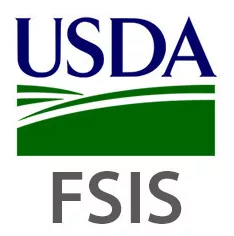Hurricane Hermine Prompts New USDA Food Safety Advice

Just over a week after flood waters wreaked havoc on Louisiana, the U.S. Department of Agriculture (USDA) is again sharing life-saving food safety advice, this time for residents in Florida, Georgia and the Carolinas as Hurricane Hermine makes landfall.
FSIS recommends that consumers take the following steps to reduce the risk of foodborne illness during severe weather events.
Steps to follow in advance of losing power:
- Keep appliance thermometers in both the refrigerator and the freezer to ensure temperatures remain food safe during a power outage. Safe temperatures are 40°F or lower in the refrigerator, 0°F or lower in the freezer.
- Freeze water in one-quart plastic storage bags or small containers prior to a storm. These containers are small enough to fit around the food in the refrigerator and freezer to help keep food cold. Remember, water expands when it freezes so don’t overfill the containers.
- Freeze refrigerated items, such as leftovers, milk and fresh meat and poultry that you may not need immediately—this helps keep them at a safe temperature longer.
- Know where you can get dry ice or block ice.
- Have coolers on hand to keep refrigerator food cold if the power will be out for more than four hours.
- Group foods together in the freezer—this ‘igloo’ effect helps the food stay cold longer.
- Keep a few days’ worth of ready-to-eat foods that do not require cooking or cooling.
Steps to follow if the power goes out:
- Keep the refrigerator and freezer doors closed as much as possible. A refrigerator will keep food cold for about 4 hours if the door is kept closed. A full freezer will hold its temperature for about 48 hours (24 hours if half-full).
- Place meat and poultry to one side of the freezer or on a tray to prevent cross contamination of thawing juices.
- Use dry or block ice to keep the refrigerator as cold as possible during an extended power outage. Fifty pounds of dry ice should keep a fully-stocked 18-cubic-feet freezer cold for two days.
Steps to follow after a weather emergency:
- Check the temperature inside of your refrigerator and freezer. Discard any perishable food (such as meat, poultry, seafood, eggs or leftovers) that has been above 40°F for two hours or more.
- Check each item separately. Throw out any food that has an unusual odor, color or texture or feels warm to the touch.
- Check frozen food for ice crystals. The food in your freezer that partially or completely thawed may be safely refrozen if it still contains ice crystals or is 40°F or below.
- Never taste a food to decide if it’s safe.
- When in doubt, throw it out.
Food Safety After a Flood
- Do not eat any food that may have come into contact with flood water – this would include raw fruits and vegetables, cartons of milk or eggs.
- Discard any food that is not in a waterproof container if there is any chance that it has come into contact with flood water. Food containers that are not waterproof include those packaged in plastic wrap or cardboard, or those with screw?caps, snap lids, pull tops, and crimped caps. Flood waters can enter into any of these containers and contaminate the food inside. Also, discard cardboard juice/milk/baby formula boxes and home canned foods if they have come in contact with flood water, because they cannot be effectively cleaned and sanitized.
- Inspect canned foods and discard any food in damaged cans. Can damage is shown by swelling, leakage, punctures, holes, fractures, extensive deep rusting, or crushing/denting severe enough to prevent normal stacking or opening with a manual, wheel?type can opener.
For more information about perishable food safety and answers regarding general food safety questions, visit FSIS.USDA.gov.
Sign up for Food Safety Magazine’s bi-weekly emails!
Looking for quick answers on food safety topics?
Try Ask FSM, our new smart AI search tool.
Ask FSM →








